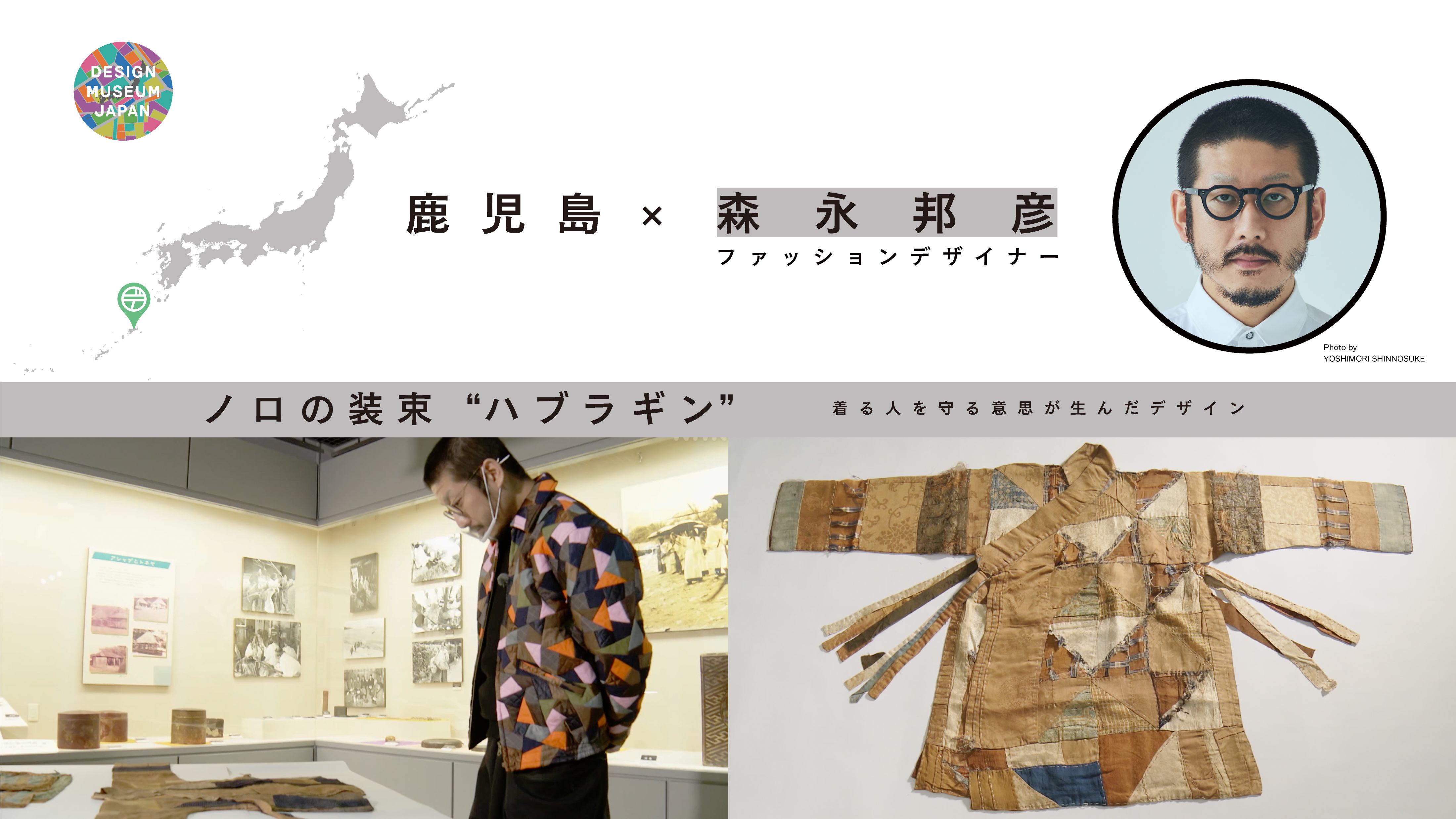Fumie Shibata researched Kaiki silk, a fabric made in the Gunnai area (northern foothills and eastern region of Fuji) in Yamanashi prefecture. The soil and climate in this area are unsuitable for farming. Instead of agriculture, textile production has thrived since ancient times. The water essential for the textile industry has been abundantly available from a spring in Fuji, and its proximity to Edo, a major consumption center, made it well known during the Edo period. It was not until the Meiji period that the name "Kaiki silk" came into existence. Characterized by its thinness, lightness, variety of colors, and intricate patterns, it was used as the lining of haori, Japanese formal kimono as an "invisible fashionable" fabric. Later, with the spread of Western-style clothing, production stopped, but Kaiki silk is still a symbol of the region, and fabrics inheriting its characteristics are still produced.
Fumie Shibata Product Designer
Kaiki Silk

DESIGN TREASURE
A Thousand Year Old Weaving Tradition
The Roots of Gunnai Silk Fabrics

Various Kaiki Samples
Meiji and Taisho Periods
Courtesy of the Yamanashi Industrial Technology Center and Fuji Technical Support Center
CREATOR

Fumie Shibata Product Designer
Born in Yamanashi.
After working for a major electrical appliance maker, she became independent. She now works on a wide range of projects from electronic products to daily goods, medical appliances and total hotel direction with companies both in Japan and abroad. Her representative creations include “Kenonkun” the medical thermometer for Omron (2013), the “9h” the capsule hotel (2013), and her recent works include “Molm” suitcase (2022).

The basic structure of the fabric and characteristics of Kaiki
The vertical fibers are set on the loom and the horizontal fibers woven in. The combined use, also, of multiple techniques gives Kaiki silks their extraordinary expressive powers.
<Typical Kaiki>
Picture Kaiki (E Ekaiki)
The vertical fibers set on the loom are patterned by stencil or hand prior to weaving. This process then continues in a repeating cycle of coloring and weaving.
Kasuri-dyed Kaiki (Kasuri Kaiki)
The threads are dyed in the Kasuri resist-dyeing manner. The colored parts of the thread have to be finely staggered, thread by thread, to produce a pattern when woven.
Striped Kaiki (Shima Kaiki)
Horizontal stripes are produced using horizontal threads on plain vertical threads. Alternatively, vertical stripes can be produced using horizontal stripes of a single color.
Other classes of Kaiki include Jewel Beetle Kaiki (Tamamushi Kaiki), Plain Kaiki (Muji Kaiki), Loose Kaiki (Hogushi Kaiki), Lattice Kaiki (Koushi Kaiki) and more.

Attractiveness of Kaiki Silk−Thinness and Lightness
Features of the Weaving and the Fabric
The silk threads of Kaiki silk are hardly twisted at all. They were dyed prior to weaving and woven extremely closely in a plain weave. The lack of twisting produced a distinctive sheen and touch, and the fabrics are so thin and fine as to be transparent. Both high technique and painstaking work were needed to make these fabrics. “It may be technically possible to recreate the thinness and patterns of Kaiki using modern technology. On the other hand, it would be difficult for such fabrics to succeed as an industry,” says Shibata. That is why she wants to share the appeal of Kaiki silk and “preserve it as a design treasure”.

Kaikii silk stands out for its thinness when seen through the light
The Amazing Multi-Layered Effect From Only Horizontal and Vertical Threads
The figurative pattern of Ekaiki silk is created by stencil or hand on the vertical fibers on the loom, then weaving it. The pattern on the cloth that has gone through this process looks as if it has multiple overlapping layers. Shibata is amazed at the seemingly infinite depth of the cloth's flat surface. She thinks that the reason for the unique development of the cloth is "the lack of farmland and the desire to find a way to make use of the limited resource of silk threads, which led to the creative expression of patterns and added value to the cloth”.

Sample of Ekaiki
Courtesy of the Yamanashi Industrial Technology Center and Fuji Technical Support Center

Color Kaiki that changes color depending on the way the light hits it

Shibata is amazed at the complexity of the Picture Kaiki
Colors and Patterns Created From an Aspiration for Foreign Fabrics
The Yamanashi Industrial Technology Center, which Shibata visited for research, has a large number of overseas fabric samples in storage. It is believed that these fabrics came to Japan from Europe during the Meiji period and were used as a basis for craftsmen to learn cutting-edge techniques and designs from overseas. Some of the clothes in the collection are reminiscent of the patterns and colors of Kaiki silk. “Kaiki silk was not born suddenly and without reason. It was born because there was a traditional weaving technique in the area and the craftsmen admired the textiles that came from abroad and tried to incorporate newness,” says Shibata, recalling the roots of Kaiki silk.


Foreign Fabric Samples
Courtesy of the Yamanashi Industrial Technology Center and Fuji Technical Support Center
Where Can We See This Design Treasure?

Installation view: Yamanashi Prefecture, Fujiyoshida City by Fumie Shibata, DESIGN MUSEUM JAPAN Exhibition at The National Art Center, Tokyo, Japan, 2022
The Kaiki Museum





























